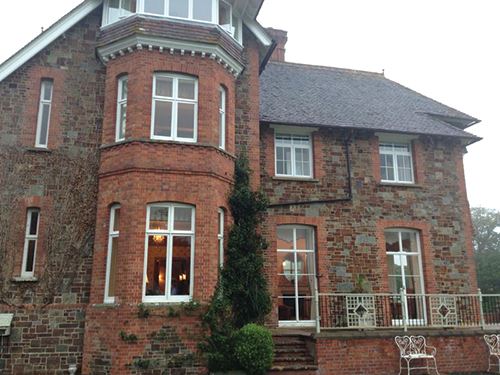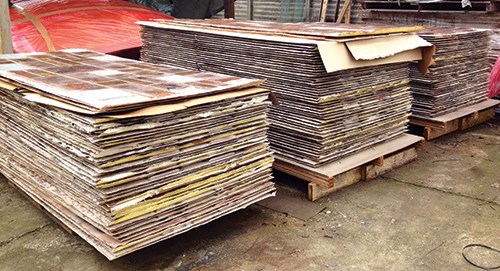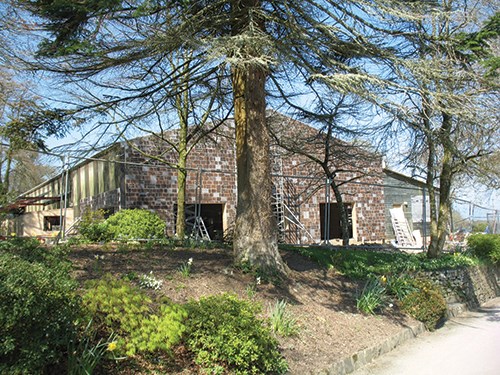Event pavilion: SMC panels ensure architectural authenticity
To expand its services, the High Bullen golf and spa hotel in Devonshire, U.K., converts a little-used tennis facility into a flexible meetings facility, and kept the remodeled structure within the local "heritage" code with simulated mortared stone-like composite panels from Acell Industries Ltd. (Dublin, Ireland).
To expand its services, the High Bullen golf and spa hotel, located on a former country estate in Devonshire, U.K., converted a little-used tennis facility into a flexible space for weddings and meetings. Strict local authorities, however, required that new construction or renovation be consistent with traditional architectural styles. “To reproduce the original building’s appearance with natural stone would have been very costly and taken a very long time,” says Michael Frieh, executive director of Acell Industries Ltd. (Dublin, Ireland). That’s why the hotel’s owner contacted Acell for a cost-effective solution that could duplicate the look of High Bullen’s 19th-Century “Devon stone.”
Acell’s patented molding technology was up to the task: It combines sheet molding compound (SMC) faceskins with a core of frangible yet fire-resistant “mineral foam” in a low-pressure compression molding press. A master model of fiberglass can be layed up directly on any natural material, making it possible to replicate virtually any planar architectural texture, ranging from, as in this case, classical stone and brick to very contemporary designs, in cast aluminum mold surfaces says Frieh. Color is duplicated with inmold coatings, natural sand or even printed fabrics. Realizing shape and color in a single step eliminates secondary finishing, keeping cost and production time to a minimum. Frieh credits such process efficiency with a big role in sealing the hotel contract: “The speed of installation and the panel price were very attractive.”
For the pavilion façade, Frieh says, “we photographed buildings in surrounding villages to get the feel of the local architecture and the variance in the Devon stone material.” Acell also chemically analyzed a Devon stone sample, and incorporated powdered iron oxide and sand grains during the inmold coating process, so the panels look and feel like authentic stone.
Stone samples and a facsimile of slate roofing tiles, also reproduced by Acell, have been accepted by the owner, builder and permitting authority. Frieh expects to get the “go ahead” imminently and, when the pavilion makeover is done, will follow up with a model guest bungalow that will net a contract for 100 planned units.
Related Content
-
Composites-reinforced concrete for sustainable data center construction
Metromont’s C-GRID-reinforced insulated precast concrete’s high strength, durability, light weight and ease of installation improve data center performance, construction time and sustainability.
-
Fiberglass conduit manufacturer grows into new products, infrastructure applications
Texas-based Champion Fiberglass, a five-time CW Top Shops honoree, expands its success in the fiberglass composite conduit market into new applications and products, looking toward future automation and sustainability initiatives.
-
Gatorbar, NEG, ExxonMobil join forces for composite rebar
ExxonMobil’s Materia Proxima polyolefin thermoset resin systems and glass fiber from NEG-US is used to produce GatorBar, an industry-leading, glass fiber-reinforced composite rebar (GFRP).
















